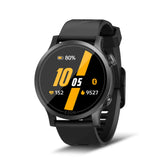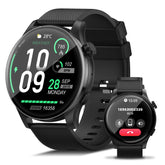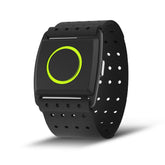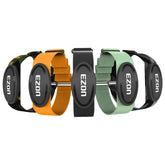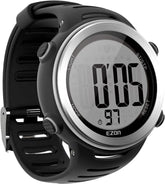Blood Oxygen Monitoring: Why It Matters in Fitness
As fitness enthusiasts and athletes strive to improve their performance and overall health, the importance of monitoring various physiological parameters has become increasingly evident. One such critical measure is blood oxygen levels. Understanding how blood oxygen monitoring works, its significance during fitness activities, and its impact on performance can provide valuable insights for optimizing training and health. In this article, we will explore the importance of blood oxygen monitoring, normal blood oxygen levels, and how tools like a blood oxygen monitor watch, fitness tracker watch, and healthy smart watch can aid in your fitness journey.
What is Blood Oxygen Monitoring?
Blood oxygen monitoring involves measuring the level of oxygen (O2) in your blood, typically expressed as a percentage. This measurement helps assess how efficiently your body is delivering oxygen to tissues and organs, which is crucial for optimal physical performance and overall health.
How Blood Oxygen Levels Are Measured
The most common method for measuring blood oxygen levels is through a pulse oximeter, a device that clips onto a fingertip or earlobe. Many modern blood oxygen monitor watches and fitness tracker watches now include built-in pulse oximetry technology, making it easy to monitor your blood oxygen levels on the go.
Why Blood Oxygen Monitoring Matters in Fitness
1. Assessing Aerobic Capacity
Oxygen is vital for aerobic metabolism, which powers sustained physical activity. Monitoring blood oxygen levels can provide insights into your aerobic capacity and overall fitness level. Lower oxygen saturation may indicate that your body is struggling to meet the demands of exercise, signaling the need for adjustments in training intensity or recovery.
2. Enhancing Performance
Understanding your blood oxygen levels during workouts can help optimize training. For example, if your levels drop significantly during high-intensity exercise, you may need to incorporate more recovery time or adjust your workout regimen to ensure your body is adequately supported.
3. Identifying Potential Health Issues
Monitoring blood oxygen levels can help identify potential health issues, such as respiratory conditions or anemia, that may impact performance. If you notice consistently low oxygen levels during workouts, it may be worth consulting a healthcare professional for further evaluation.
4. Tailoring Training Regimens
By tracking changes in blood oxygen levels, you can tailor your training regimen to your physiological needs. For instance, if you find that your oxygen levels are consistently low during certain types of workouts, you might consider focusing on endurance training or incorporating breathing exercises to improve oxygen delivery.
Understanding Normal Blood Oxygen Levels
Normal blood oxygen saturation levels typically range from 95% to 100% in healthy individuals. Here’s a breakdown of what different levels may indicate:
- 95-100%: Normal oxygen saturation, indicating good respiratory and circulatory function.
- 90-94%: Mild hypoxemia, which may indicate the need for further evaluation.
- Below 90%: Significant hypoxemia, which may require immediate medical attention, especially during physical activity.
It’s essential to note that individual factors, such as altitude and pre-existing health conditions, can influence these levels.
The Role of Technology in Blood Oxygen Monitoring
1. Blood Oxygen Monitor Watch
A blood oxygen monitor watch allows you to continuously track your oxygen levels throughout the day and during workouts. Look for features such as:
- Real-time monitoring: Get instant feedback on your blood oxygen levels during exercise.
- Alerts: Some watches can notify you if your levels drop below a certain threshold, enabling proactive management of your health.
2. Fitness Tracker Watch
Many fitness tracker watches now come equipped with blood oxygen monitoring features, providing a comprehensive view of your fitness metrics. These devices often track additional parameters, such as heart rate and activity levels, allowing you to correlate oxygen levels with overall performance.
3. Healthy Smart Watch
A healthy smart watch combines blood oxygen monitoring with other health features, such as sleep tracking, stress management, and heart rate variability assessments. These watches can provide a holistic view of your health and fitness, helping you make informed decisions about your training and lifestyle.
Conclusion
Blood oxygen monitoring plays a crucial role in fitness and overall health by providing valuable insights into your body’s ability to deliver oxygen efficiently. Whether you’re an athlete striving for peak performance or someone looking to improve overall well-being, understanding and monitoring your blood oxygen levels can help you tailor your training regimen, enhance performance, and identify potential health concerns. Investing in a blood oxygen monitor watch, fitness tracker watch, and healthy smart watch can empower you to take control of your fitness journey and optimize your health for the long term. Embrace the technology available to you, and let blood oxygen monitoring guide you toward greater fitness success!
